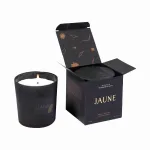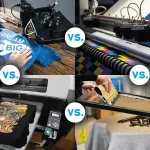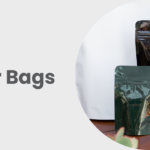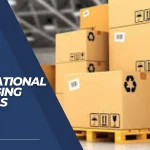In recent years convenience has now become more important than ever. Something that has been a very prominent choice as a convenient product is a frozen food. Frozen food has become very popular as of late, and its popularity is only growing. Everything is available in frozen form, from a whole chicken to small pieces. The growing desire for convenience and changes in the retail industry have continued to influence when, where, and how people shop. Today’s consumer needs for convenience and affordability drive a shift in preference from traditional fresh foods to new and innovative frozen products. The increased demand for these frozen foods and increased production to meet this demand has also given rise to packaging solutions being made to store these frozen food. Food has to be preserved in the right way to remain edible. Frozen foods also need special packaging to remain good until ready to be used and eaten.
Packaging Used for Frozen Foods
Packaging used for packing and storing must have certain qualities to be a suitable choice. If the packaging you are using to store your frozen foods does not have these characteristics, then you might not be able to preserve the foods the way you want. Some of the qualities that you need in the packaging for your frozen foods are:
- It can be packed easily
- It can be filled easily
- Packaging is easy to seal
- Should be durable
- Should be moisture-resistant
- Sustains at different temperature levels
- Should be strong
- Does not crack
- Protects against spoilage
- Should be water-resistant
- Protects against grease and oil
These are some features your frozen food box packaging should have. This will ensure you get the food where it needs to be without any problems.
Materials Used in the Packaging of Frozen Foods
The materials used in the packaging of frozen foods are tested and ensured to keep them protected and prevent spoilage. Certain materials that are not harmful to edibles and can help preserve them are used in the packaging. The most common options for packaging frozen foods include corrugated boards, metal cans, paperboard, wax-coated paper, and other flexible packaging materials. One of the most common packaging materials for frozen food is polyethylene, which can withstand temperatures down to – 40 degrees. Another common material is polypropylene. This material is used as it is a freezer-safe material and can be stored at very low temperatures. Frozen food packaging is made of many different materials. These materials include petroleum-based products. Some petroleum-based products that are used are, shrink wrap and polyethylene. They can also make from cardboard and aluminum. Some other materials used in the packaging of frozen foods are;
CNK Paperboard
CNK is short for coated natural kraft. The CNK board is reinforced with a coating to protect the food’s integrity from the thawing process’s abrasion, making it a rugged yet compliant substrate. Coated natural kraft is made from softwood fibers. These fibers provide very high strength and protection when refrigerated or frozen. The surface consists of hardwood fibers and a clay-based coating. This coating makes it ideal for printing. Its glossy surface is ideal for demanding graphic designs and decorative effects where extreme temperature changes and condensation will not compromise its integrity. The CNK’s low-bore construction allows it to be lighter than comparable substrates while maintaining a rigid form factor, thus reducing costs.
SBS Paperboard
This is short for solid bleach sulfate. SBS is a medium-density substrate option suitable for printing, composed of white pulp derived from virgin wood. It is clay coated to preserve the which protects the food inside. SBS is embossed, foil stamped, and creased while withstanding extreme cryogenic freezing temperatures. The visual design that the entire process gives to the final product makes these products stand out in the refrigeration sector. This makes it a good packaging choice for attracting more customers, as the visuals of the product packaging will not get affected.
Poly-Coated Paperboard
Poly-coated substrates are highly effective for products requiring direct food contact and a grease barrier. They are also heat resistant, a very popular property in microwaveable products, making them a popular choice for food packaging. It gives reason to use it when considering frozen foods as a packaging material.
Types of Frozen Food Packaging
Frozen food packaging is of many different types. You can use many materials as long as they withstand very low temperatures and contain the above qualities. Some of the types of frozen food packaging are:
Glass
Some frozen products, such as ice cream, use glass packaging. However, this type of packaging mainly falls under luxury packaging, which focuses on the brand’s image. It has enormous advantages such as recyclability, reuse, and, most importantly, neutral reactivity. In addition, it protects food and beverages from contamination. This makes them ideal for long-distance deliveries.
Wax Coated Cardboard
Wax-coated boards are the most common packaging material and are also convenient for end users. They are usually used for later heated food in the container itself. This makes it a very convenient option as the same container used to pack the frozen food and keep it safe can heat it later. For example, if you receive frozen food in a waxed cardboard can, you can heat it directly in the microwave without removing the can. Wax-coated cardboard does not let heat pass, meaning it is heat-resistant. This makes it ideal for ready-made frozen food.
Aluminum Foil
Aluminum foil is another popular material used in packaging frozen products because it is lightweight, flexible, and recyclable. Another advantage is that it does not contain toxins and is hygienic to keep food safe and authentic. In addition, it protects food from UV rays, oil, and water vapor, preserving its quality until the very end.
Shrink Film
Another name for shrink film is shrink wrap. It is widely used in many industries due to its various functions and reliability. This material consists of either polyethylene, polyolefin, or polyvinyl chloride. All these can be used at very low temperatures, making the shrink capable enough to withstand very low temperatures. This material is wrapped around a box and passed through a heat tunnel to shrink the material onto the box. This prevents moisture build-up and freezer burn, keeping your product safe until the very end.
Containers for Storing Frozen Food
Containers that can withstand low temperatures and are freezer safe should use for storing frozen foods. These containers must make out of the materials that we have mentioned above. It is important to choose the right container for your food to stay safe. If you store your frozen food in a container that is not made to be frozen, the food will not be preserved properly and can lose its quality and flavor.
Some of the qualities that your container must have to keep your food protected are:
- Moisture and water resistant
- Leak-proof
- Do not break or crack
- It can be sealed easily
- Oil and grease resistant
- It should be durable and strong
Plastic or glass containers are suitable for storing and packing foods. These containers are often reusable and stackable, making freezer storage easier.
Flexible freezer bags and moisture-proof packaging materials are suitable for dry packaging products with little or no liquid content. Such materials include plastic freezer wrap, freezer paper, and heavy aluminum foil. These freezer bags can also use for liquid packaging. Bags and wraps are suitable for irregularly shaped foods. Before storing, remove as much air as possible.
Polypropylene containers are freezer and microwave safe. This makes them ideal for heat-and-eat applications, extended shelf life, and freezing applications. They have certain qualities to protect them from cold temperatures. Their high barrier and soft copolymer qualities prevent cracking when exposed to extremely cold temperatures. Polypropylene containers are available in clear, black, white, and custom printed and in various standard or custom designs. These containers can withstand temperatures from three degrees to a hundred degrees or – 0°C to 125°C, depending on the polypropylene container used. Common uses include soups, seafood, poultry, meats, dips, and frozen foods.
Benefits of Using Frozen Food Packaging
By using proper packaging for frozen packaging, you can get certain benefits that can save you money and give you the proper value that you desire. In addition, you can keep your frozen foods fresh by properly packaging your foods with the right materials. You can keep them frozen for a long time, take them out, and eat them without worrying about the taste changing or the food going bad. This way, you can also get convenient meals whenever you want and save your precious time and money.
Using the right materials is also key for remarkable deliveries and service. During the hectic shipping process, you can handle your frozen foods getting spoiled and ruined.
Get the right packaging boxes for your frozen foods and enjoy the convenience!








